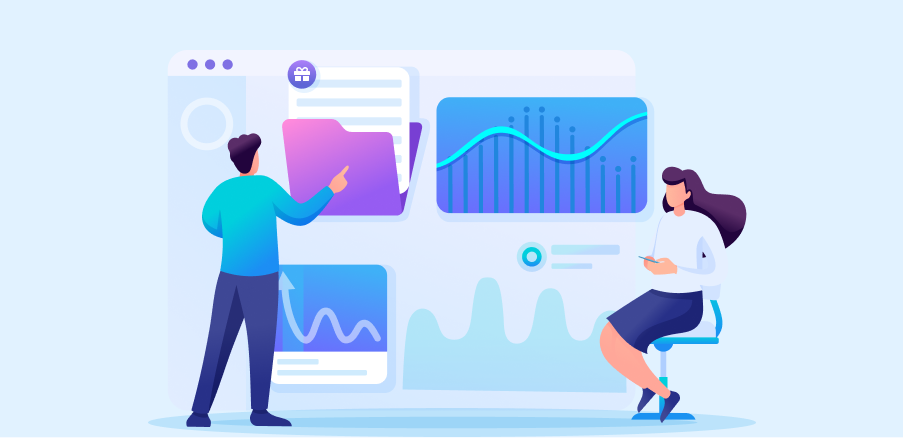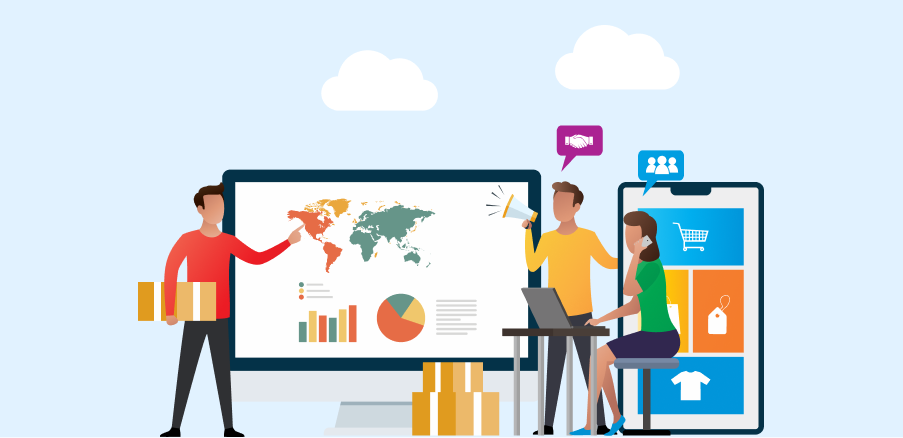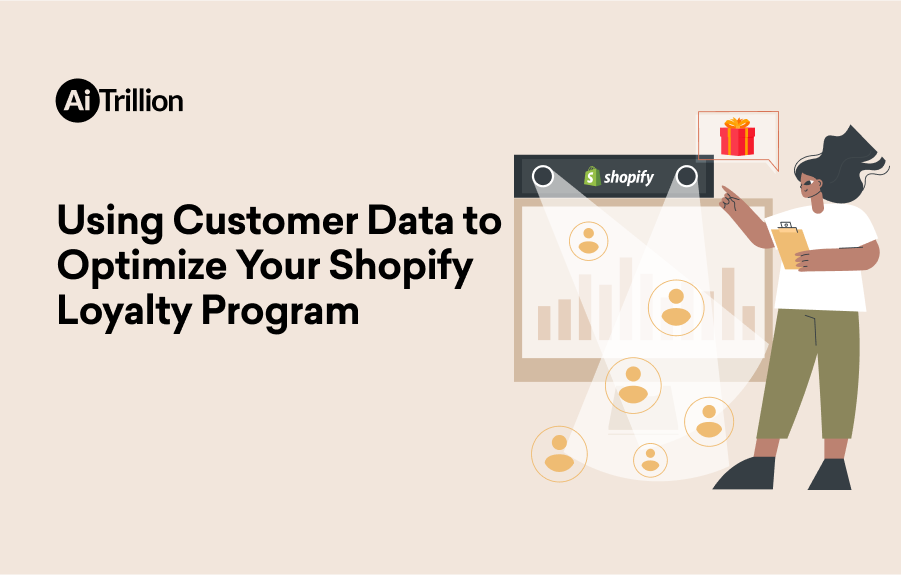- The Importance of Customer Data for Shopify Loyalty Programs
- Collecting and Analyzing Customer Data for Loyalty Program Optimization
- Segmentation Strategies for Personalized Rewards and Promotions
- Using Customer Data for Effective Promotion and Communication
- Examples of Successful Shopify Loyalty Programs Driven by Customer Data Analysis
- Conclusion
The Importance of Customer Data for Shopify Loyalty Programs
The success of any loyalty program depends heavily on the ability to understand customer behavior and preferences. By collecting and analyzing customer data, Shopify store owners can tailor their loyalty programs to the needs of their customers, driving engagement, and boosting sales. Effective use of customer data can also help businesses stay ahead of competitors by anticipating customer needs and preferences.
Customer data is essential for the success of Shopify loyalty programs. Here are some reasons why:
- Understanding customer behavior and preferences allows businesses to create personalized rewards and promotions.
- Data analysis can help businesses identify valuable customer segments and tailor loyalty programs to their needs.
- Effective use of customer data can help businesses stay ahead of competitors by anticipating customer needs and preferences.
- By using customer data to optimize loyalty programs, businesses can increase customer retention, boost sales, and generate positive word-of-mouth referrals.
According to a study by Accenture, 91% of customers are more likely to shop with brands that recognize, remember, and provide relevant offers and recommendations. By using customer data to create personalized rewards and promotions, businesses can increase customer satisfaction and drive loyalty.
Collecting and Analyzing Customer Data for Loyalty Program Optimization
To effectively use customer data to optimize loyalty programs, businesses need to collect and analyze data effectively. Shopify offers built-in analytics tools that can track customer behavior, purchase history, and engagement with loyalty programs. Additionally, businesses can segment customer data by demographic, behavior, or purchase history to gain insights into customer preferences and interests. Third-party data analysis tools or services can also provide deeper insights into customer behavior and preferences.
Collecting and analyzing customer data is a critical component of optimizing Shopify loyalty programs.
Here are some reasons why:
- Shopify’s built-in analytics tools can track customer behavior, purchase history, and engagement with loyalty programs.
- Customer data analysis can provide insights into customer preferences and interests, enabling businesses to create personalized rewards and promotions.
- Segmenting customer data by demographic, behavior, or purchase history can help businesses identify valuable customer segments and tailor loyalty programs to their needs.
- Third-party data analysis tools or services can provide deeper insights into customer behavior and preferences.

According to a survey by Salesforce, high-performing companies are 1.5 times more likely to use customer data to personalize interactions and communications with customers. By collecting and analyzing customer data, businesses can optimize their loyalty programs to drive customer engagement and boost sales. Additionally, data analysis can help businesses stay ahead of competitors by anticipating customer needs and preferences.
Segmentation Strategies for Personalized Rewards and Promotions
Personalization is key to driving engagement and loyalty in Shopify loyalty programs. Businesses can use customer segmentation to tailor rewards and promotions to specific groups of customers, based on behavior, demographics, or purchase history. By offering rewards that are specific to each customer’s interests, such as personalized discounts or free products, businesses can increase engagement and encourage repeat purchases. Targeted promotions that highlight products or categories that are relevant to each customer’s interests can also drive engagement and loyalty.
Segmentation strategies are key to creating personalized rewards and promotions that resonate with each customer’s interests and behavior in Shopify loyalty programs. Here are some reasons why:
- Segmenting customers based on behavior, demographics, or purchase history can help businesses identify valuable customer segments.
- Tailoring rewards and promotions to each customer’s interests and behavior can increase engagement and encourage repeat purchases.
- Offering rewards that are specific to each customer’s past purchases, browsing history, or wishlist items can drive loyalty and sales.
- Targeting underutilized customer segments with personalized promotions can increase engagement and drive sales.
According to a study by Epsilon, personalized emails have a 29% higher open rate and a 41% higher click-through rate than non-personalized emails. By using segmentation strategies to create personalized rewards and promotions, businesses can increase customer engagement and drive loyalty. Additionally, segmentation can help businesses identify valuable customer segments and tailor loyalty programs to their needs, increasing customer satisfaction and retention.
Using Customer Data for Effective Promotion and Communication
Effective promotion and communication are crucial to driving engagement and loyalty in Shopify loyalty programs. By using customer data to create personalized marketing messages that resonate with each customer’s interests and behavior, businesses can increase engagement and drive sales. Email marketing, social media, and other channels can be used to promote loyalty programs and encourage participation. Businesses can also use customer data to identify the most effective promotion strategies for each customer segment.
Effective promotion and communication are crucial to driving engagement and loyalty in Shopify loyalty programs. Here are some reasons why using customer data is essential:
- By using customer data to create personalized marketing messages that resonate with each customer’s interests and behavior, businesses can increase engagement and drive sales.
- Email marketing, social media, and other channels can be used to promote loyalty programs and encourage participation.
- Personalized promotions can be sent based on past purchases, browsing history, or wishlist items.
- Using customer data to identify the most effective promotion strategies for each customer segment can maximize ROI.

According to a study by Segment, 44% of consumers are likely to become repeat buyers after a personalized shopping experience with a brand. By using customer data to create personalized marketing messages and promotions, businesses can increase customer engagement and drive loyalty. Additionally, using customer data to identify the most effective promotion strategies for each customer segment can maximize ROI and drive sales.
Examples of Successful Shopify Loyalty Programs Driven by Customer Data Analysis
Several successful loyalty programs have effectively used customer data to drive engagement, loyalty, and sales in Shopify. Here are some examples:
- Sephora’s Beauty Insider program offers personalized product recommendations, birthday gifts, and exclusive access to events based on customer behavior and purchase history. The program has over 17 million members and has been shown to drive increased sales and customer loyalty.
- Starbucks’ rewards program offers personalized rewards and promotions based on customer purchase history and preferences. The program has over 19 million members and has been shown to drive increased sales and customer engagement.
- Amazon Prime offers personalized recommendations, exclusive discounts, and free shipping based on customer behavior and purchase history. The program has over 200 million members worldwide and has been shown to drive increased customer loyalty and repeat purchases.
These loyalty programs have been successful because they use customer data to create personalized rewards and promotions that are tailored to each customer’s interests and behavior. Additionally, they use customer data to identify valuable customer segments and create targeted promotions to drive engagement and loyalty.
According to a survey by Accenture, 83% of customers are willing to share their data to enable a personalized shopping experience. By using customer data to create personalized rewards and promotions, businesses can increase customer satisfaction and drive loyalty. Additionally, customer data analysis can help businesses stay ahead of competitors by anticipating customer needs and preferences.
Conclusion
Using customer data to optimize Shopify loyalty programs is crucial to driving engagement, loyalty, and sales. By collecting and analyzing customer data, segmenting customers effectively, and using data to personalize rewards and promotions, businesses can create loyalty programs that resonate with each customer’s interests and behavior. By continually testing and refining loyalty programs based on customer data insights, businesses can ensure that their programs are delivering the best possible ROI for their Shopify store.



Leave a Comment
You must be logged in to post a comment.